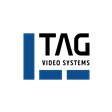Data-driven decision-making is the future, if not already your day-to-day reality- but it doesn’t come without difficulties. How do you solve the challenges and use the power of predictive analytics to your advantage?
In an era of information overload, data has emerged as the new currency driving businesses worldwide. The media & entertainment industry are no exception, with insights and analytics derived from this data becoming the keys to unlocking innovation, revenue growth, and audience expansion.

Data is often vast, complex, and seemingly insurmountable. Yet, this raw information holds great potential in how we understand our industry and audience. Maximising its own data can expose a company to its deficiencies and identify problematic issues. But it can also provide the insight they need to make informed decisions, accelerate change responsibly, and excel technically and operationally.
An ongoing challenge lies in transforming this data into actionable insights, a task that requires both sophisticated tools and strategic vision. Today’s environment requires the interpretation of all available quality metrics, such as QoS and QoE, turning these raw mountains of data into concrete strategies for boosting operational efficiency and staying one step ahead in an intensely competitive landscape.
However, turning the lens towards data-driven decision-making isn’t without its challenges. Capturing the data—the right set of metrics that will drive growth, inspire content ideation, and enable true business enablement—is a complex task. Converting that data into results is a process that requires interoperability between various vendors that eclipse traditionally proprietary and predefined data sets and opens the door to more advanced and elaborate data visualisation and analytics tools.
And it’s here that the power of advanced monitoring and visualisation solutions shines. Seamlessly integrated into IP workflows, these tools provide a crystal-clear view of system interactions, providing the foundation for rapid, effective responses. By doing so, we’re not just reacting to disruptions—we’re minimising negative impacts with quick time-to-repair (TTR), ensuring that audiences enjoy uninterrupted, high-quality service.
As the broadcasting landscape rapidly evolves, those at the forefront are the ones embracing the power of data-driven decision-making. And in this forward-thinking mindset, we inevitably find a focus on software-centric, IP solutions. These tools, known for scalability and continuous innovation, are leading the charge from traditional, hardware-dependent setups towards flexible, agile cloud-based systems.

Aggregating data across multiple systems and workflows provides real-time capacity, integrity, and network metrics, helping customers steer around outages and congestion, correlating and identifying problems, content and delivery issues. In 2022, TAG Video Systems reacted to this growing trend of optimising data-driven analytics by adding another layer to its Realtime Media Performance platform: the Media Control System (MCS). The MCS serves as an aggregation engine, system manager and orchestrator for the data collected. Using an open-source paradigm, the MCS exposes every piece of data probed and monitored to third-party analytic and visualisation applications such as Kibana and Grafana enabling DevOps teams to use the information for forensic or predictive analysis, know where to move workloads for optimum performance, and empowers them with the knowledge and insight to design a precise and pristine viewer experience.
The implications of this shift toward data-driven insight and analytics should resonate across all levels within an organisation. Engineers find themselves equipped with the tools to make informed, data-backed day-to-day operational decisions. Simultaneously, managers can future-proof their IP workflows, while executives can zoom out to view the industry from a broader perspective, enabling strategic choices that shape the future of their businesses.
But the future isn’t just about reacting—it’s about predicting. And not to be ignored or forgotten, Machine Learning and AI are a growing trend in data-driven analytics. AI/ML is pushing the industry towards more and more automation with algorithms that decode complex data patterns, enabling personalised viewer experiences and future developments that could help identify potential system pitfalls before they occur. It’s a twofold approach—improving customer satisfaction while optimising system performance—creating a broadcasting environment that’s as robust as it is dynamic.
In conclusion, our industry is in the midst of rapid change, increasing day by day—one that needs to be future-focused and data-centric. This approach is no longer an asset—it’s a necessity for those looking not just to survive but thrive in an ever-evolving landscape. Working with experienced partners with proven interoperable solutions can help you achieve greater efficiency and cost savings. If you’re interested in exploring how visualising data can benefit your business, we encourage you to consider reaching out to experts in the field, one that is able to provide the proper guidance and stay ahead of the curve. So, as we dive into the transformative power of data, we’re not just exploring numbers—we’re pioneering the future of our industry.



























No comments yet